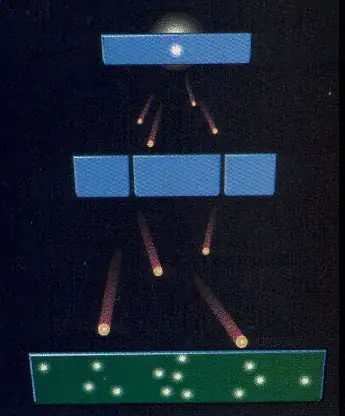Consider the image below. It shows a double slit experiment but with a single photon at a time. My question is as follows:
Why is it that the photons always take a different path when shot at the same target? Where does the uncertainty lie? If we shoot it in exactly the middle of the two slits, why does it have a 50-50 chance of going into either slit? And why is the amount of diffraction for a single photon always different?
I know that people will say that the photon enters both the slits at the same time and things like that. But does anyone have an intuitive explanation as to why this happens? Why does a photon, shot with the same frequency and exactly in the same direction, still have the probability of entering either slit. Why is it that the diffraction of a single photon is different for the same wavelength?
So in brief, why does a single photon which is shot in an exactly the same why as the previous one, end up being in a different place. I am looking forward to an answer with the least possible math (if any). Or is it that a photon cannot be shot in the exact same way as the previous one?

Image source: http://abyss.uoregon.edu/~js/images/photon_double_slit2.gif